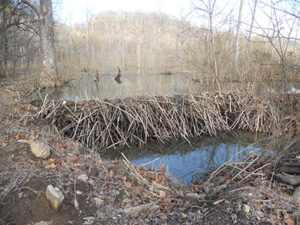 When using beaver as a tool for restoration, it can be helpful to try to think like a beaver. But how do you do that? Since we can’t ask the beaver how his or her mind works, we went to the next closest resource: a group of professionals who study or work in the field of stream restoration. Through an informal poster at the 2018 Upper Midwest Stream Restoration Symposium, an annual gathering hosted by the Partnership for River Restoration and Science in the Upper Midwest, we introduced participants to a fictitious beaver named Beverly. Beverly posed a question: “I am looking for a new place to live. What should I look for?”
When using beaver as a tool for restoration, it can be helpful to try to think like a beaver. But how do you do that? Since we can’t ask the beaver how his or her mind works, we went to the next closest resource: a group of professionals who study or work in the field of stream restoration. Through an informal poster at the 2018 Upper Midwest Stream Restoration Symposium, an annual gathering hosted by the Partnership for River Restoration and Science in the Upper Midwest, we introduced participants to a fictitious beaver named Beverly. Beverly posed a question: “I am looking for a new place to live. What should I look for?”
Some people took the question seriously, and encouraged Beverly to look for:
 Good food source: willows, poplar, birch, aspen.
Good food source: willows, poplar, birch, aspen.- Small drainage areas: less likelihood of dam breaching.
- Low gradient streams
- Low velocities
- Trees/woods/forest
Others wanted Beverly to settle in specific locations:
- Take over my Beaver Dam Analogs (BDA’s) in Eastern Washington.
- You’re welcome in Catfish Creek – rent is due on the first.
- Iowa DOT Mitigation sites (there are plenty of your kind there already)
- An almost completed dam, culvert, or spillway clogged with debris
- Where people don’t want you.
One person said she needed a husband, whereas someone else replied: “False. You are a strong independent beaver who doesn’t need a male.”
Finally, Beverly received this lovely note from a geomorphologist:
“Ms. Beaver: First, you must listen. The burbling waters will speak to you, beckon you to follow them. Then you must wait for the winds, for they shall set the aspen leaves a-trembling. If you hear both flowing waters and trembling leaves, my daughter, you are home.”

